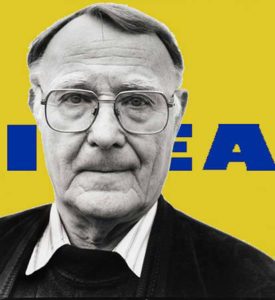 It’s always invaluable learning for me to be inspired by the design-thinking process behind an iconic brand. So I got excited when I came across this brilliant article on the presentation technique used for the NeXT logo by the legendary graphic designer Paul Rand, the “presentation book” as it’s called, is worth taking a look at as a student of design if you are eager to inquire into the mindset & approach of Rand. Just to give you some background, Steve Jobs left Apple along with several of his co-workers and set up a new company in 1985 which he named NeXT, and the story goes that he approached the Brooklyn-based Paul Rand who had previously done logos for Esquire, IBM, ABC, Westinghouse, and UPS, to design a logo for his company which he accepted. Though I wasn’t surprised when I discovered that he had such limited knowledge about NeXT to design a decent identity and yet the proof of his creative intelligence is right there in front of us.
It’s always invaluable learning for me to be inspired by the design-thinking process behind an iconic brand. So I got excited when I came across this brilliant article on the presentation technique used for the NeXT logo by the legendary graphic designer Paul Rand, the “presentation book” as it’s called, is worth taking a look at as a student of design if you are eager to inquire into the mindset & approach of Rand. Just to give you some background, Steve Jobs left Apple along with several of his co-workers and set up a new company in 1985 which he named NeXT, and the story goes that he approached the Brooklyn-based Paul Rand who had previously done logos for Esquire, IBM, ABC, Westinghouse, and UPS, to design a logo for his company which he accepted. Though I wasn’t surprised when I discovered that he had such limited knowledge about NeXT to design a decent identity and yet the proof of his creative intelligence is right there in front of us.
[perfectpullquote align=”right” bordertop=”false” cite=”” link=”” color=”” class=”” size=””]In 1986 Jobs approached Rand to design the logo for his NeXT educational computer company. After obtaining permission from IBM, Jobs offered Rand a handsome sum to develop a logo for a product that was not yet public. The only thing Rand knew was that the mysterious NeXT computer was a black cube. With this scant yet meaningful intelligence, Rand developed a unique proposal book for the mark that walked the reader – Mr Jobs – through the step by step conceptual process to the final, logical outcome.[/perfectpullquote]
Designers often thrive on ambiguity and mystery. Indeed, there are various procedures to understand the design challenge in order to create an approach, but sometimes that information which you receive for analysis is either insufficient, vague or lacking in insightful knowledge, and yet the expectations from the outcome are tremendously high. This is one of the reasons why I admire Paul Rand as an exemplar of a great graphic designer, his creative intelligence helped develop strong brands that outlived even the institutions that they were designed for.
Coming back to NeXT, it’s one thing to design a logo and quite another to present it to an individual like Steve Jobs who was passionate about design and a nitpicker. So when he asked Paul Rand for designing a number of options to consider for his logo, the 71-year old Rand famously declared that he’d not create options for his clients – “I will solve your problem, and you will pay me,” he told Jobs, “you can use what I produce, or not, but I will not do options, and either way you will pay me.” He paid Paul Rand an astonishing $100,000 for one design.


 I was moved to learn about the passing away of IKEA’s founder Ingvar Kamprad yesterday, aged 91. He was born in 1926 in Småland in southern Sweden and raised on ‘Elmtaryd’, a farm near the small village of Agunnaryd, that’s how the company also got its name IK (Ingvar Kamprad) E (Elmtaryd) A (Agunnaryd). Ingvar displayed an entrepreneurial spirit at a tender age and founded IKEA in 1943 when he was only 17, initially selling pens, wallets, picture frames, table runners, watches, jewellery and nylon stockings at reduced prices and eventually moving to retailing furniture in 1948. I once wrote about the design of a table from their catalogue which supported
I was moved to learn about the passing away of IKEA’s founder Ingvar Kamprad yesterday, aged 91. He was born in 1926 in Småland in southern Sweden and raised on ‘Elmtaryd’, a farm near the small village of Agunnaryd, that’s how the company also got its name IK (Ingvar Kamprad) E (Elmtaryd) A (Agunnaryd). Ingvar displayed an entrepreneurial spirit at a tender age and founded IKEA in 1943 when he was only 17, initially selling pens, wallets, picture frames, table runners, watches, jewellery and nylon stockings at reduced prices and eventually moving to retailing furniture in 1948. I once wrote about the design of a table from their catalogue which supported 